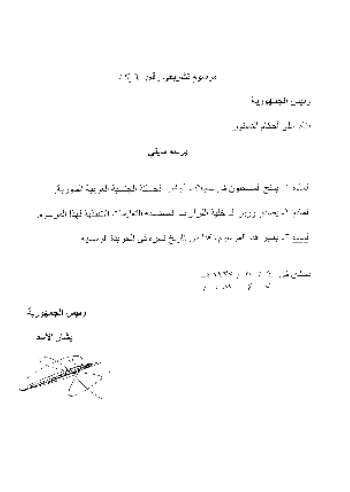Stateless populations in Syria
Statelessness is not a new problem for Syria. Before the current crisis there were stateless individuals in Syria due to gaps in the application of the nationality law or individual loss or deprivation of nationality. As of the end of 2015, UNHCR estimated that there were 160,000 stateless persons in Syria. However this figure does not include the Palestinians in the country (of whom there are approximately half a million). This section explores the profiles of the main groups of stateless persons in Syria:
Stateless Kurds (Ajanib and Maktoum)

How many: There is no exact data on how many stateless Kurds lived in Syria prior to the conflict, but the number was estimated to be between 160,000 and 300,000.
Why are they stateless: The presence of a stateless Kurdish population in Syria dates back to Jazira census in 1962. This government census required those who lived in the northern area of Alhassaka to register and provide documentary evidence that they had been living in the area since the 1920s. As a result of this census the Kurds who lived in this area were split into three:
- Those who managed to fulfil the registration requirements and remained citizens
- Those who tried to register, but did not fulfil the registration requirements and therefore lost their citizenship. These were labelled the Ajanib Kurds and given a foreigner’s residence permit
- Those who never tried to register and were removed from the Syrian registry system. This group are known as the Maktoum Kurds.
This status was hereditary, so the descendants of the Ajanib and Makoum Kurds inherit their statelessness. However, stateless Kurds are a minority of the Kurdish population in Syria. The stateless Kurds had, before the conflict, taken part in many protests calling for recognition of their right to nationality.
What was their human rights situation in Syria: Due to the persistent discrimination, stateless Kurds are likely to be more impoverished than the average Syrian. Access to education was widely reported to be problematic for this community, particularly Maktoum Kurds, which is likely to have resulted in substantially lower education levels.
Other information: The adoption of Decree 49 in 2011 gave thousands of stateless Kurds the possibility of acquiring nationality. According to UNHCR, by mid-2013, some 104,000 stateless individuals had acquired nationality. However the current conflict has made the process of applying for nationality difficult and has therefore made it hard to map the impact of this decree on the number of stateless Kurds in Syria. Furthermore, there are no clear figures on how many stateless Kurds have fled to other countries due to the current conflict.
Palestinian Refugees from Syria (PRS)
How many: Before the conflict there were over half a million Palestinians registered with UNRWA in Syria (UNRWA is the United Nations Relief and Works Agency for Palestine Refugees in the Near East, which is mandated to provide assistance and protection for Palestinian refugees). Many more Palestinians lived in Syria but were not registered or eligible for registration with UNRWA. So the exact number of Palestinians living in Syria was not clear.
Why are they stateless: Many Palestinians had fled to Syria as refugees since 1948. Palestinian refugees are excluded from naturalising as Syrian nationals (despite their long-term residence in the country), in accordance with the Casablanca Protocol, in order to protect their right to return to Palestine.
What was their human rights situation in Syria: In general, Palestinians in Syria had access to many rights, for example the rights to education and healthcare, employment, own businesses and travel freely throughout Syria. Palestinian refugees in Syria do not have the right to vote or stand for election, and there is a restriction on the amount of property and arable land they can buy. Palestinians have their own documents such as a specific ID for Palestine refugees and the Palestinian Travel Document – a document issued by Syria to Palestinians who habitually resided on the territory in lieu of a national passport, but not denoting possession of Syrian nationality. Due to the conflict many Palestinians who were habitually resident in Syria have now been displaced to neighbouring countries and beyond.
Other information: Of particular concern are the “non-ID Palestinians”. A non-ID Palestinian is the term commonly used to refer to a Palestinian who is not registered with UNRWA, UNHCR or the authorities of the country in which they reside. Although there are no figures, there are known cases of non-ID Palestinians from Syria among those displaced to neighbouring countries.
Isolated cases of stateless refugees
How many: Unknown, but the numbers are likely to be relatively low.
The isolated cases of statelessness include:
- Children of foreign, unknown or stateless fathers. Due to the gender discrimination in Syria’s nationality law which does not allow children to acquire nationality from their Syrian mothers if these children do not acquire a nationality from their father they may be left stateless.
- The Dom - a traditionally nomadic community found across much of the Middle East and North Africa region which is believed to share its roots with the Roma of Europe. A minority of Dom originally from the Syrian territory, but who often travelled across the borders between Syria and the neighbouring countries never acquired Syrian nationality or registration.
- Political dissidents who were seen to be opposed to the Baath regime in the 60s and 70s and arbitrarily deprived of their nationality. An estimated 27,000 persons were denationalised in this period and may be stateless.



